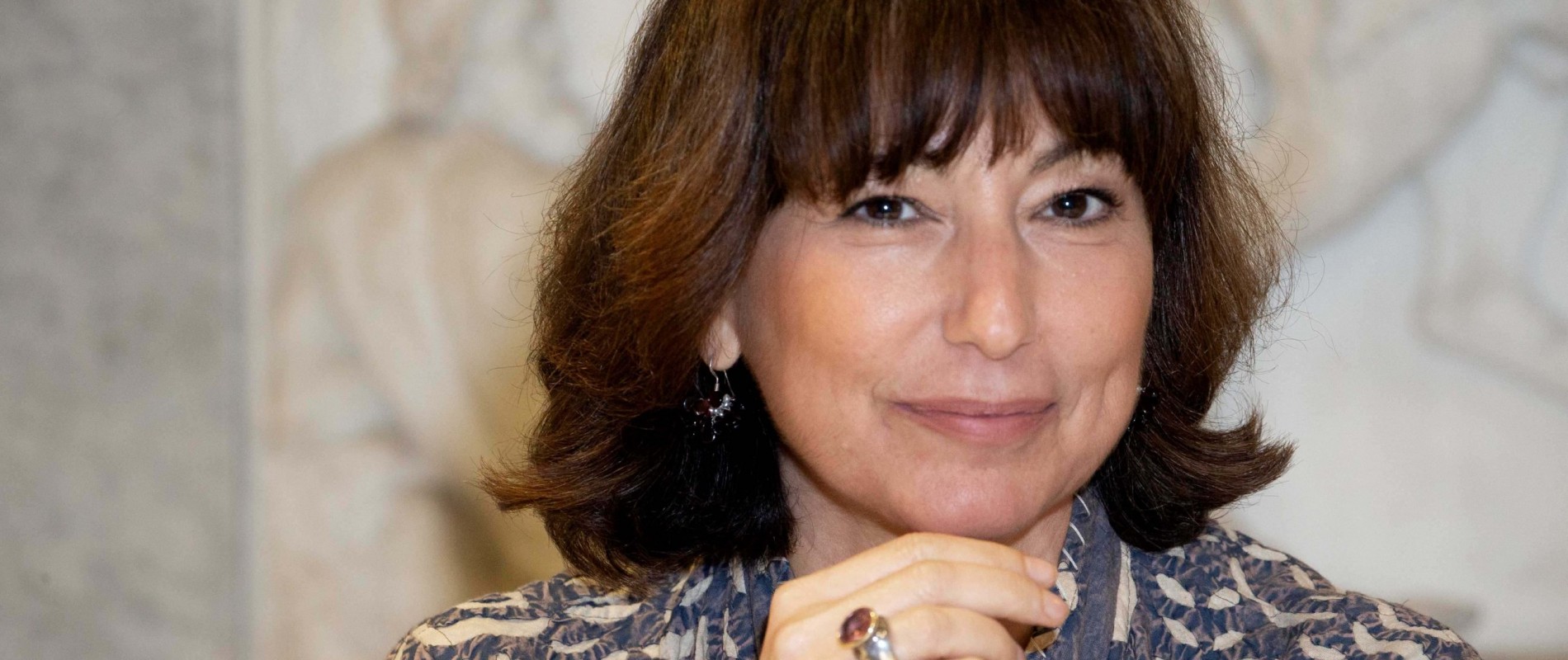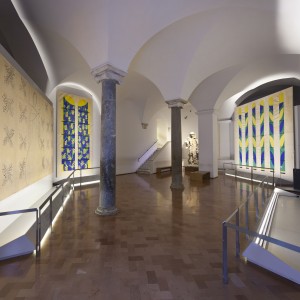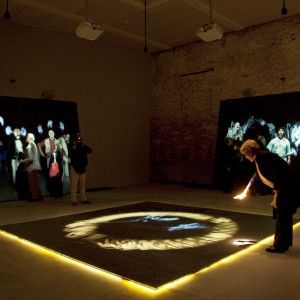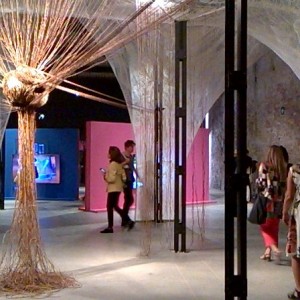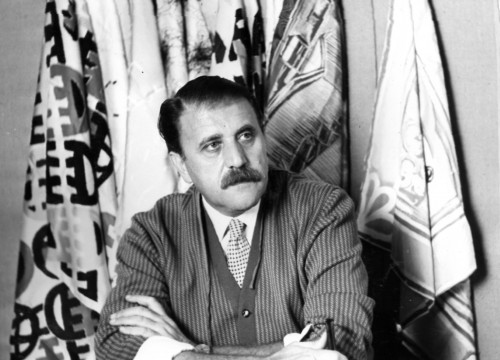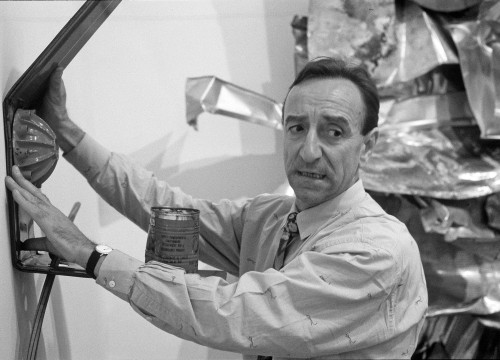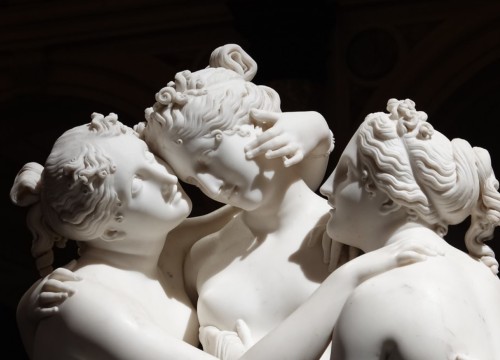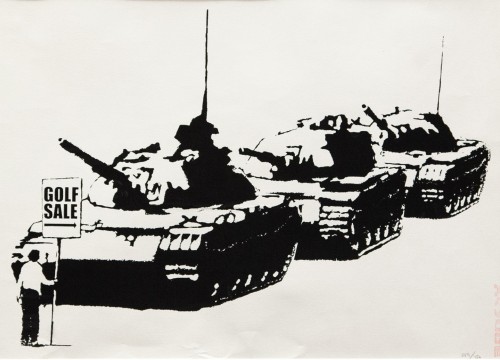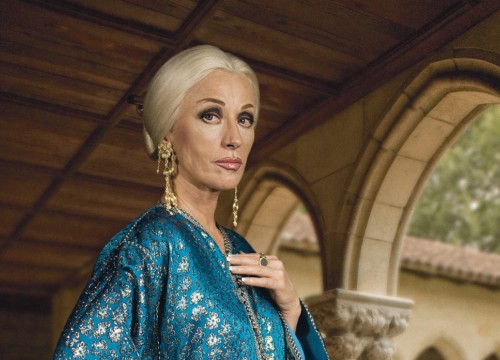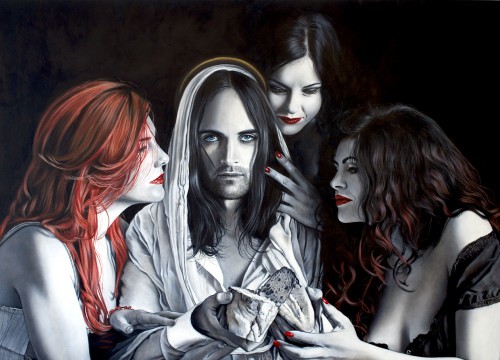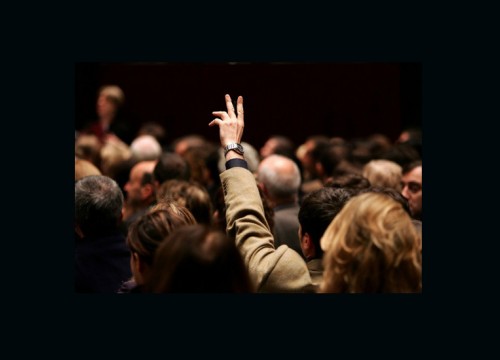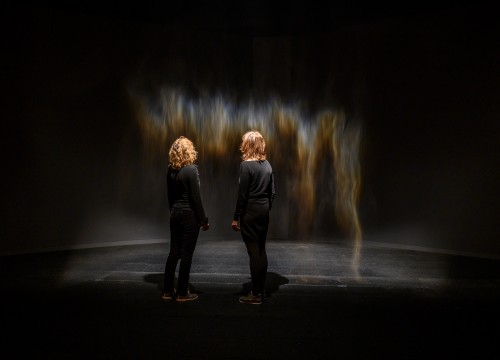The floor to Micol Forti, director of the Collection of Contemporary Art of the Vatican Museums
She has been directing the institution for 21 years. With the intention, in the wake of the words of Paul VI, for whom beauty and truth coincide
Dedicated for some time to the study and analysis of the reconciliation process between artists and the Church induced by Paul VI, having seen in September 2011 the Sala Matisse of the Vatican Museums with the preparatory sketches of the Chapelle du Rosaire in Vence, in full preparation for the Sixth Triennial of Contemporary Sacred Art in the summer of 2012 in the Ancient Seminary of Piazza Duomo in Lecce, having already identified Igor Mitoraj as the sculptor for the opening exhibition of the review, came the opportunity to involve Micol Forti.
I would meet her again in Lecce in December 2012 to talk about “Church and contemporary art, new settings at the Vatican Museums” at the end of the cycle “Conversations in Academy” and, in the following years in Venice as curator of the pavilions of the Holy See at the Biennial of Art (2013 and 2015) and the Biennial of architecture (2018). Mrs. Forti resolved them all by overcoming the pre-existing schemes, with critical choices attentive to the internationality of the presences, the plurality of expressions and the development of new techniques. There are several exhibitions to remember: “Santiago Calatrava. The metamorphosis of space” in the Arm of Charlemagne in Rome (2013), “In full light. Nine photographers interpret the Vatican Museums” (Palazzo Reale, Milan, 2018) related to the creation of the new nucleus of contemporary photography of the Vatican Museums, “Gauguin Matisse Chagall. La Passion in French Art from the Vatican Museums” (Milan, Museo Diocesan Museum, 2020), to which should be added her attention to “that surprising universe of forms” that is contemporary African art. There are also many publications: from “Aby Warburg and the Italian culture. Between Survival and Research Perspectives” (Mondadori University, 2009), “Crossing History. Showing the Present. The Vatican and International Exhibitions (1851-2015)” by Edizioni Musei Vaticani in co-edition with 24 Ore Cultura in 2016. The latest curatorship coincides with the review “Mending the Pain-Weaving the Hope. The ‘Via Crucis’ of Maria Lai” in Jerzu until the 4th of September.
Let us leave to the dialogue that follows the ability to make us better understand her thought process and her praxis.
What has changed since June 23rd, 1973 when Paul VI, inaugurating the Collection of Modern Religious Art, drew attention to the prodigious capacity of artists “to express, beyond the authentic human, the religious, the divine, the Christian,” thus ratifying the re-established in this way ratifying the re-established “friendship between the Church and artists,” almost solicited in the Homily of May 7th, 1964, when, celebrating the Ascension he said to artists: “We need you. Our ministry needs your collaboration”?
Paul VI’s had a vision and a challenge. A profound connoisseur of knowledge of art and theories of art since his youth, a leading player in the aesthetictheological debate, as soon as he ascended to the throne in 1963, Pope Montini understands that it is the task of the Church, from its highest summit, to reset the comparison with contemporary culture, which recognizes a central role to art. The speech in the Sistine Chapel on May 7th, 1964 and the Letter to Artists, the concluding document of Vatican Council II of 8 December 1964 are two official acts that are the foundation of this vision which became a project. The challenge was to be able to create, in the institutional heart of the cultural memory of the Church, the Vatican Museums, a collection that would not only account for the relationship between the artists of the 20th century with sacred times, and more broadly with spirituality and transcendence, but, above all, represented the beginning of an exchange to be cultivated and expanded in the future. In June of 1973, when the works collected in only nine years formally passed under the direction of the Vatican Museums, the challenge was not won. It had just begun. The original nucleus could not and did not want to have any claim to exhaustiveness or critical militancy. Instead, it had to give an “official” signal and a concrete support to a more effective and lasting between the arts, in its countless forms of expression, and the Church, in its many expressions, functions and activities. The growing and reciprocal interest, the closer and more mature dialogue of this confrontation, which we have witnessed at least in the last fifteen years, tells us that much has changed and that the challenge is in part won.
Thirty-six rooms full of exceptional works, of historical and contemporary presences, reflections on movements and periods, of in-depth studies of certain artists. Only a chronological path or much more?
The historical nucleus of the Collection counted about 900 works. Today, less than fifty years after its birth, it includes about 9000. However, the exhibition spaces are those intended for the Collection at the time of its opening: the Borgia Apartment, the rooms adjacent to the Cortile dei Pappagalli and the rooms below the Chapel. An area that allows the exhibition of about 450 works. The extension and the architectural conformation of these rooms pose numerous constraints for the type and arrangement of the works to be exhibited. In recent years, together with our colleagues Francesca Boschetti and Rosalia Pagliarani, we have adopted a diversified exhibition criterion. To a general chronologicalgeographical approach adopted between 2000 and 2010, we have added thematic and monographic rooms. Recently, for example, following the acquisition of the great polyptych Golgotha by Sidival Fila, we created a room dedicated to the theme of the Passion; while among the monographic displays the large gouaches découpé by Henri Matisse for the chapel of Venice, in the room inaugurated in 2010, the one dedicated to Marino Marini completely renovated in 2012, and that of Studio Azzurro, the first interactive video installation to enter our Collections, realized for the first Pavilion at the Venice Biennale in 2013 and included in the permanent installation in 2016. Within a museum itinerary as vast as the one of the Vatican Museums, moments of deepening are very important, able to change the pace of attention, renewing interest and curiosity.
Today, 50 years after his birth, the collection includes 9.000 works of art
What is the founding criterion of the choices made in the curatorship of the Pavilions of the Holy See at the Venice Biennale 2013 and 2015 and the first Vatican Pavilion at the 2018 Architecture Biennale?
The participation in the International Biennial of Art and Architecture of Venice was a project conceived, pursued, and realized by the Pontifical Council for Culture in the person of its president, Card. Gianfranco Ravasi, who succeeded in the not so simple undertaking of establishing, among the national pavilions, that of the Holy See. The contemporary art of the Vatican Museums has been invested with the scientific curatorship also for the role of Consultant of the Department that I have held since 2011. I can also say that at the origin of this project there is a vision that has brought the confrontation between art and church to a field historically dedicated to art and its experimentation, outside of any sacred or any sacred or liturgical context.
And what was the exhibition script developed on those occasions?
The heart of our pavilions was to offer the artists a specific theme of reflection and direction to the creation of their works, specially made: Genesis (Creation, De-Creation and Re-Creation) in 2013; the Word became flesh, from the Gospel of John, in 2015; the Chapel in the woods, a sacred and meditative place of prayer and rest, in 2018. The works have been created in close dialogue with the artists, leaving them complete freedom of expression. The choice, in fact, started from the diversity of their linguistic research and their aesthetic and poetic sensitivity. Many of the works - apart from the chapels that can be seen in the park of the Cini Foundation on the Island of San Giorgio many of the works have become part of our Collection, allowing us to document their participation in a historical event, and to contribute to the process of enrichment and transformation, already largely underway, of our Collection.
Starting from the observation that creativity cannot, and must not, have limits in the modes of expression, languages, and territories, in what way is it possible to update in which way is it possible to actualize the “invisible connections” at the Italo Calvino’s reflections on art as knowledge? How is your Collection changing?
The Vatican Museums - like the Louvre, the British or the Metropolitan - preserve an immense patrimony in terms of eras, cultures, geographical origins, types of objects and artifacts. They are places in which the “invisible connections” are everywhere, active for anyone who wants and knows how to grasp them. In this wood, visitors are called to get lost, encountering trees of every species and every age, only to find themselves changed and enriched, modern and contemporary art plays a fundamental role. It is impossible to situate our knowledge and give value to our memory, without having knowledge of our present, without wanting to understand its principles and doubts, the strength and fragility, without feeling an active part and not just a spectator. It is in the light of the context in which we live, of the questions and hypotheses that we are able to formulate, that we also elaborate the narration of history, past and recent. As in every era, art plays an indispensable role in giving voice to the complexity of our present. The research of artists, their creativity, need different places to be able to activate their works, making them part of a wider process that we have the duty to protect, promote and intensify.
But is art still a political and social commitment?
Never as in recent decades have we witnessed such a widespread penetration of many art forms into the collective fabric, a process that has expanded and amplified has widened and amplified the identification criteria of what previous generations have defined as previous generations have defined as political and social commitment. A push that inevitably acts also on the most cultured and elitist artistic research, always and in any case sensitive to the communicative and expressive systems and to the communitarian role, therefore social and political, they play in our time.
Participations in the Venice Biennale of Art and Architecture are the result of a project strongly supported by Cardinal Gianfranco Ravasi
Twenty-one years of directing the Collection of Contemporary Art of the Vatican Museums. What are your reflections, thoughts and hopes?
This long and intense professional experience has been interwoven with other activities that have contributed in a decisive way to the methodological approach of my work. The research doctorate, the teaching at La Sapienza University - Artistic Literature and Museology -, the studies on Aby Warburg and artistic and aesthetic theories at the turn of the nineteenth and twentieth centuries, have consolidated my interest in the relationship between surviving, persistence, and innovations, which represents the red thread of my investigations in the historical field. At the same time, the long collaboration with the GNAM of Rome and the intense curatorial activity, have offered me the opportunity to test the importance of the critical work whose effect plays a central role in the museum profession. Because museums are not cemeteries, as Paul VI warned, they are, on the contrary, living and pulsating places of knowledge and protection, bodies in constant transformation, in which research, ideas, cultural policy, objectives, and projects are in constant interrelationship and contamination. To have the responsibility of a nucleus as delicate as the contemporary sector of the Vatican Museums is, it is an honor to be in charge of it, but above all it implies the duty to pursue the constant exchange between past, present and future, forget the conviction that lies at the origin of the Pauline project, that art has the capacity to intercept the terrain in which beauty and truth coexist.

